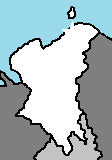Jyau
Republic of Jyau | |
|---|---|
|
Flag | |
 | |
| Capital | Gutaai |
| Official languages | Jyauese |
| Demonym(s) | Jyauese |
| Government | Republic |
| Matthias Cerfbeer | |
| Establishment | |
• Founding | 1320 |
• Annexation by Vitosium | 1798 |
• Seperation and Republic | 1919 |
| Population | |
• 2020 estimate | 11,622,000 |
| Date format | mm-dd-yyyy |
The Republic of Jyau, most commonly known as Jyau, is a nation in the Coalition of Crown Albatross located on the continent of Adula, bordered by Vitosium, Oeslia, and Nancaya, with a coast on the Strait of Greland. The capital of Gutaai is also the largest city in the country comprising of nearly 6 million people, meaning it holds more than 55% of the national population. With a culture and history spanning a millenium, Jyau was conquered by Alexander Agostinio in 1798 and annexed by the Vitosium Empire. It gained independence in 1919.
History
Prehistory
Antiquity
Middle Ages
Vitosium Occupation
Annexation by Vitosium

In the summer of 1797, King Alexander of Vitaso led a vicious campaign to conquer the kingdoms of Jyau and Nancaya, ultimately conquering the two and annexing them fully in the following year. In Jyaueze culture, the year of 1798 has long been referred to as the "Year of Anguish", as King Alexander was known for his barbaric methods against towns and villages that refused to surrender to his armies. During the Siege of Gutaai, for instance, over 900 civilians were massacred by Alexander's forces. The city of Gutaai, the main trading port and population center of Jyau, fell to Vitosium forces on 7th March, 1798, ultimately securing Vitosium control over the country. -life under vitosium control- -lead up to independence-
Independence from Vitosium
In 1917, the Vitosium appointed Governor of Jyau, Peter Semmens, announced his intention to separate from Vitosium, passionately rallying his countrymen to separate violently if need be. The governor of Nancaya followed suit days later, also stating intent to secede. While most of the Jyau population was intent on independence, the majority of the population wished for a peaceful separation. However, a small percentage of Semmens' followers were extremists, forming rebel cells that attacked Vitosium military outposts and checkpoints, sabotaged convoys and factories, and created general chaos specifically in the population centers of the country. Semmens was relieved of his governorship by Prime Minister Rudolph Raymond, who reprimanded him for his secessionist views.
-lead up to peaceful independence - politicians work to separation agreement-
On July 7th, 1919, the provinces of Jyau and Nancaya were granted autonomy after the referendum passed in the Parliament of Vitosium. Prime Minister Raymond signed the Hickling Act, which solidified Jyau and Nancaya's independence. Peter Semmens was elected the first Chancellor of Jyau on July 16th, 1919, although his extremist views during the course of secession made him unpopular with many politicians in the senate. His chancellorship was revoked during the second session of the senate, and he was replaced in a vote of no confidence by Winston Brisley on September 2nd, 1919.
Republic
The Constitution of Jyau was ratified on October 6th, 1919, officially establishing the nation as a republic. Elections for senators and the Chancellor would cycle every four years beginning on June of 1920, effectively making Jyau one of the last vestiges of colonial remnants in Northern Adula.

